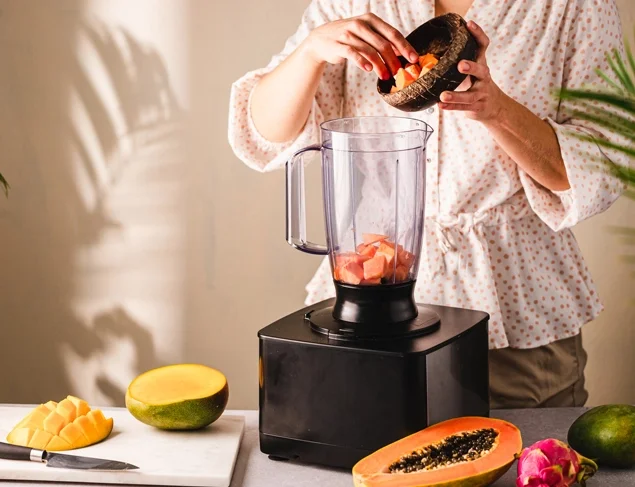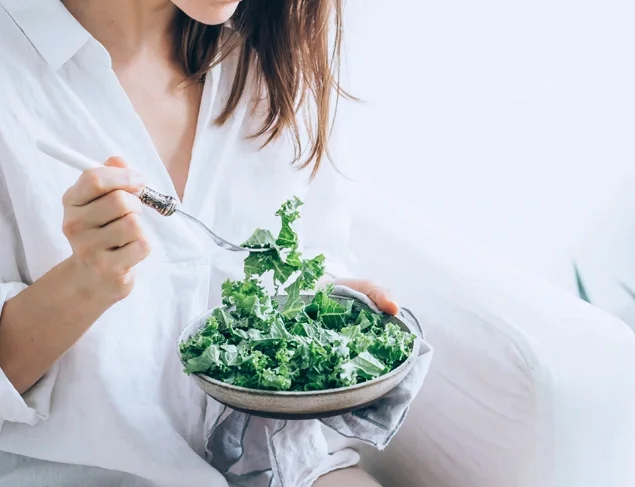With almost all fruit and vegetables available all year round, it’s harder to work out what produce is in season at any given time.
Summer brings a wide range of delicious fruit and vegetables, which can also be enjoyed on a low FODMAP diet! While summer favourites such as cherries and mangos are not low FODMAP, there are plenty of other options available.
Here is our Australian guide to low FODMAP summer fruit and vegetables so you can eat seasonally on a low FODMAP diet.
Why shop in season?
Well, there are many reasons why you should shop seasonally. When particular fruit and vegetables are in season, there are more of them available. More produce = a much lower price tag. This means that seasonal produce is cheaper AND tastes better.
So basically, you spend less money and get tastier fruit and veg – how’s that for a win-win!?
Shopping seasonally also has some major benefits for the environment as when you eat something that’s not in season in your local region, that means it has been transported from another part of the world where it is in season. Eating ripe, locally sourced produce cuts down on the environmental impact of extensive transport and storage.
Nutrients in fruit and vegetables
Below are some low FODMAP fruit and vegetables that are in season each spring and summer in Australia. We’ve also listed a couple of nutrients the produce is high in, and how you can enjoy them.
First, let’s check out the role of these nutrients.
- Vitamin C: maintains body tissue such as muscle and skin, role in brain and nerve function, increases absorption of iron, antioxidant.
- Folate: Role in fat and protein metabolism, important in pregnancy to prevent neural tube defects.
- Vitamin E: Important antioxidant vitamin
- B vitamins: Involved in energy metabolism (act as helpers to make sure our bodies function properly).
- Vitamin A: Important role in vision, role in reproductive health (fertility), and antioxidant.
- Potassium: Important role in muscle and nerve function
- Vitamin K: Important role in blood clotting
- Calcium: Bone and teeth health
- Anthocyanin: Found in blue/purple fruit and veg, acts as an antioxidant.
- Allicin: Found in white/brown fruit and veg, helps promote a healthy immune system.
- Lycopene: Found in red fruit and veg, a powerful antioxidant.
related reads
low FODMAP diet
low FODMAP diet

Low FODMAP fruits and 5 ways to eat them
Do you feel limited by what seems like a lack of options when it comes to low FODMAP fruit? Are you struggling to get your two serves per day? Here are our top 5 ways to eat low FODMAP fruit.
low FODMAP diet
low FODMAP diet

Low FODMAP vegetables list
Have you been told time and time again to eat more vegetables? Are you unsure about which veggies are considered low FODMAP? Here's the lowdown.
low FODMAP diet
low FODMAP diet

How to be berry nice to your belly
Berries are a great addition to your low FODMAP diet. This list offers a variety of berries, berry products, and their recommended serving size. Discover more.
low FODMAP diet
low FODMAP diet

Go bananas – ripe vs. unripe bananas for a low FODMAP diet
Bananas have health benefits, but are they low FODMAP? This article explains the effects of unripe and ripe bananas on triggering IBS symptoms. Learn more.
Low FODMAP summer fruits
Bananas
Contain vitamin B6, potassium, folate, and vitamin C. Use in smoothies, add to low FODMAP pancakes and muffins, and sandwich slices together with peanut butter.
Blueberries
Contain vitamin C, vitamin k, manganese and anthocyanins. Perfect for smoothies, add to your porridge, use in baking or simply serve with lactose-free yoghurt.
Raspberries
Contain vitamin C, B vitamins, potassium, folate, magnesium and anthocyanin. Mix through vanilla yoghurt, add to chia pudding or make a smoothie bowl.
Strawberries
Contain vitamin C, vitamin K, potassium, calcium, and anthocyanin. Add to cereal, smoothies, dip in yoghurt or add to toast with ricotta and maple syrup.
Grapes
Contain vitamin C, vitamin K, carotenoids and polyphenols. Add to fruit salad, include on cheese plates, and Add to tarts and salads.
Melon – honeydew and rockmelon
Contain vitamin A, vitamin C, potassium and carotenoids. Perfect for fruit skewers with yoghurt dip, add to salads or make melon sorbet.
Passionfruit
Contain vitamin A, vitamin C, carotenoids and polyphenols. Add to cereal, yoghurt and smoothies. Make passionfruit icing for your baked goods.
Paw paw
Contain vitamin C, vitamin A, folate, potassium and lycopene. Great in smoothies and salads, cut in half then fill with yoghurt and muesli or use with tomato and coriander for a tasty salsa.
Oranges (valencia)
Contain vitamin C, thiamine, folate, and carotenoids. Add to salads, make smoothies, use in desserts and eat at half-time!
Rhubarb
Contain vitamin K, vitamin C and calcium. The perfect fruit to stew, make jams and sauces and use in desserts like crumble.
Pineapple
Contain vitamin C, manganese and folate. Add to fruit salads, grill for a healthy dessert, add on burgers and wraps or add as a pizza topping.
Prickly pear
Contain vitamin C, B vitamins, potassium, calcium, polyphenols and flavonoids. Once prepared and peeled, the fruit is best enjoyed chilled. Enjoy it on its own or mix the pulp through soft lactose-free vanilla ice cream and re-freeze for a tasty twist.
Low FODMAP summer vegetables
Carrot
Contain vitamin A, vitamin C, vitamin B6 and lycopene. Enjoy raw in salad, snacking sticks with dip, grate and use on wraps and rolls, spread with peanut butter. Perfect for use in stir-fries and casseroles or roast with a drizzle of maple syrup and sesame seeds.
Cucumber
Contain vitamin K and potassium. A salad staple, snacking stick with dip, use in wraps and sandwiches, top slices with cottage cheese or make a low FODMAP tzatziki.
Leek (the green bit)
Contain vitamin K. Use in dishes like you would onions, sprinkle on salad and omelettes.
Bean sprouts
Contain vitamin C. Add to salads, wraps and sandwiches.
Silverbeet
Contain vitamin A, vitamin K, vitamin C, vitamin B2, carotenoids, folate, iron, calcium and potassium. Add to salads, sautee as a breakfast side dish, use in stir-fry, make a dip or add to juices.
Lettuce
Contain folate, vitamin K and vitamin A. Make san choy bow or use it as a tortilla and wrap alternative.
Tomato
Contain potassium, iron, lycopene, vitamin A and vitamin C. Add to salads, sandwiches and wraps, roast with olive oil, and make salsa or tomato soup.
Zucchini
Contain potassium and vitamin C. Roast or steam as a side, add raw to a salad, use in stir-fries, casseroles and curries, grill on the BBQ, add to home-made dip or make zoodles.
Eggplant
Contain anthocyanin, vitamin B6, potassium, and magnesium. Roast with garlic-infused olive oil, grill on the BBQ or stove-top, use in replacement of lasagna sheets or make a dip.
Capsicum
Contain vitamin A, vitamin C, vitamin E, vitamin B6, folate, manganese and potassium.mAdd to stir-fries and salads, stuff and roast, grill on the BBQ or use in a dip.
Radish
Contain vitamin C and anthocyanin. Use raw in salads, roast or pickle.
Beans – green
Contain vitamin A, vitamin c and folate. Steam, add to stir-fries, curries and casseroles, pan-fry then drizzle with olive oil and sea salt.
High FODMAP produce in low to moderate FODMAP quantities
Cherries
Moderate (3 cherries). Contain vitamin C, anthocyanins and flavonoids. Enjoy as-is, or drizzle with chocolate for dessert.
Lychees
Moderate (5 lychees). Vitamin C, potassium, copper and polyphenols. Add to fruit salad and yoghurt or mix through a chia pudding.
Sweet corn
Low (1/2 cob). Contain vitamin C, magnesium, potassium and lutein. Boil or BBQ cob as a side, use as a filling for a jacket potato, and add to wraps and bowls.
Remember to eat across the rainbow
As you can see, different coloured fruits and vegetables contain different nutrients. It is important to include variety in your diet and eat fruit and veg of different colours. This will ensure you are getting a range of different nutrients to keep your body happy and healthy.
Need help with the low FODMAP diet? Our FREE dietitian developed program will guide you through it, step-by-step. Includes a low FODMAP food guide. Sign up now.
If you are experiencing gut symptoms and have not been recommended a low FODMAP diet by a health professional, get started with the manage your gut symptoms program.
Reviewed by the healthylife Advisory Board May 2022




